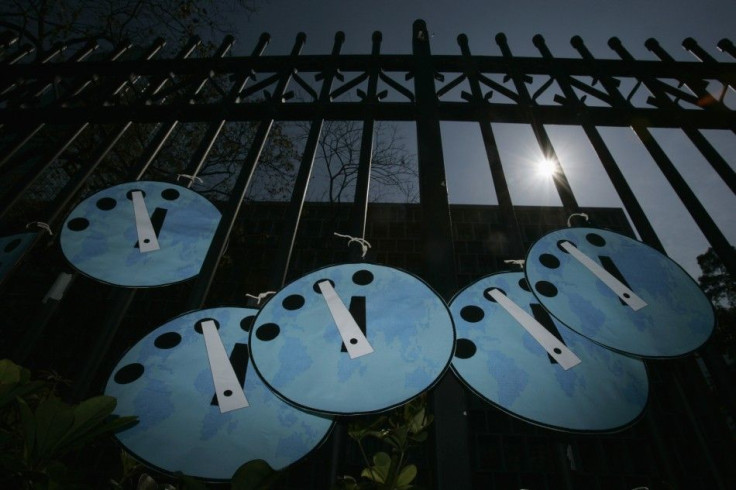'Doomsday Clock' a Minute Closer to Midnight: Are We Nearing the End?

The Doomsday Clock, a clock face used as a symbol of imminent apocalypse, has been moved one minute closer to midnight because of inadequate progress on stopping the spread of nuclear weapons and continuing inaction on climate change.
The Bulletin of the Atomic Scientist (BAS) announced on Tuesday that it has moved the Doomsday Clock to five minutes before midnight (11:55 p.m.). The closer the clock gets to midnight, the closer we are to global disaster, says BAS. It was last moved one minute back in 2010, BBC reported.
Earlier, the clock analogy represented the threat of global nuclear war. But since 2007, it has also been representing climate-changing technologies and new developments in the life sciences that could inflict irrevocable harm.
According to BAS, the group of scientists who have been maintaining the clock since 1947, it was believed 2 years ago that world leaders might address the truly global threats we face. In many cases, that trend has not continued or been reversed.
Is The End Imminent?
Jayantha Dhanapala, a member of the BAS Board of Sponsors and a former UN undersecretary-general for disarmament affairs said that despite reductions in tensions between the U.S. and Russia, the path toward a world free of nuclear weapons is not clear yet.
The ratification in December 2010 of the New START treaty between Russia and the United States reversed the previous drift in US-Russia nuclear relations, a BAS statement said. However, failure to act on the Comprehensive Test Ban Treaty by leaders in the United States, China, Iran, India, Pakistan, Egypt, Israel, and North Korea and on a treaty to cut off production of nuclear weapons material continues to leave the world at risk from continued development of nuclear weapons.
According to the group, the world still has approximately 19,500 nuclear weapons, enough power to destroy Earth's inhabitants several times over.
Apart from nuclear threat, global climate change is another issue that needs to be addressed in this regard, said Allison Macfarlane, a BAS Science and Security Board member.
The global community may be near a point of no return in efforts to prevent catastrophe from changes in Earth's atmosphere, Macfarlane said in a statement.
The statement further stated that as per the International Energy Agency's projections, if scientists can't figure out alternatives to carbon-emitting energy technologies over the next five years, the world is doomed to severe natural disasters like warmer climate, harsher weather, droughts, famine, water scarcity, rising sea levels, loss of island nations and increasing ocean acidification.
Since fossil-fuel burning power plants and infrastructure built in 2012-2020 will produce energy - and emissions - for 40 to 50 years, the actions taken in the next few years will set us on a path that will be impossible to redirect, the statement continued.
BAS has provided a set of key recommendations that include:
- Ratification by the United States of America and China of the Comprehensive Test Ban Treaty and progress on a Fissile Material Cutoff Treaty.
- Implementing multinational management of the civilian nuclear energy fuel cycle with strict standards for safety, security and nonproliferation of nuclear weapons, including eliminating reprocessing for plutonium separation.
- Strengthening the International Atomic Energy Agency's capacity to oversee nuclear materials, technology development and its transfer.
- Adopting and fulfilling climate change agreements to reduce carbon dioxide emissions through tax incentives, harmonized domestic regulation and practice.
- Transforming the coal power sector of the world economy to retire older plants and to require in new plants the capture and storage of the CO2 they produce.
- Vastly increasing public and private investments in alternatives to carbon emitting energy sources, such as solar and wind, and in technologies for energy storage, and sharing the results worldwide.
© Copyright IBTimes 2025. All rights reserved.






















